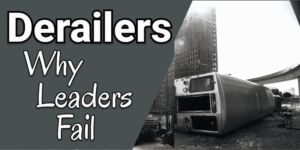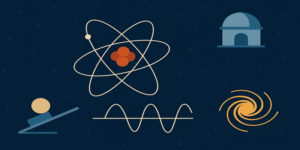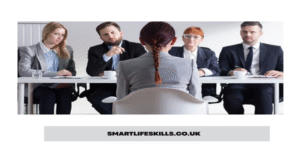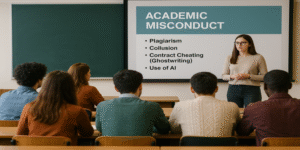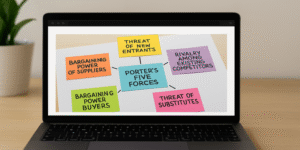In an increasingly complex and fast-changing world, the ability to think critically has become an essential skill for both personal and professional development. Critical thinking involves the objective analysis and evaluation of information to form a reasoned judgment (Facione, 2011). It allows individuals to assess arguments, recognise assumptions, and make decisions based on sound reasoning rather than impulse or bias. As Smith (2018) argues, sharpening critical thinking skills enhances not only problem-solving and decision-making but also fosters creativity, adaptability, and lifelong learning. Developing such skills requires deliberate practice and reflection through a combination of intellectual habits, analytical exercises, and experiential learning strategies.
1.0 Practice Socratic Questioning
The Socratic method, named after the ancient philosopher Socrates, is one of the most effective ways to stimulate deeper thought and self-examination. Socratic questioning involves asking probing questions that challenge assumptions and seek clarity of reasoning (Paul & Elder, 2019). According to Jones (2019), these questions help individuals move beyond superficial understanding by examining the “why” and “how” behind their beliefs and actions.
For instance, educators use Socratic questioning to help students evaluate evidence critically and construct logical arguments. This technique encourages reflective scepticism, pushing learners to justify their reasoning and consider alternative viewpoints (Brookfield, 2012). In professional contexts such as medicine or law, structured questioning enhances diagnostic accuracy and ethical decision-making by ensuring all perspectives are considered.
2.0 Read Actively and Critically
Active reading is a cornerstone of critical thinking. It goes beyond passive absorption of information by requiring readers to analyse, question, and interpret the text (Brown et al., 2020). Active readers annotate, summarise, and critically assess the author’s arguments, evidence, and reasoning.
According to Fajarina and Agustina (2025), active reading improves comprehension and fosters deeper engagement with content by transforming reading into a dialogue between the reader and the text. In academia, this approach allows students to identify biases, assumptions, and logical fallacies, while in professional environments, it aids in analysing complex reports and policies. Moreover, engaging with diverse sources — academic journals, essays, and data — helps individuals develop a well-rounded understanding of different subjects and enhances intellectual independence.
3.0 Seek Diverse Perspectives
Exposure to different perspectives broadens understanding and challenges cognitive biases. Johnson and Patel (2017) note that actively engaging with contrasting opinions enhances empathy and fosters intellectual humility. Encountering perspectives that differ from one’s own prevents confirmation bias, where individuals selectively seek information that supports their existing beliefs (Kahneman, 2011).
In globalised workplaces, understanding cultural and disciplinary diversity strengthens collaboration and problem-solving. For example, a marketing professional who incorporates insights from psychology, sociology, and data analytics develops more nuanced strategies. As Lysenko et al. (2025) argue, critical thinkers must navigate complex social and informational environments, and embracing diverse viewpoints equips them to do so effectively.
4.0 Develop Logical Reasoning
Logical reasoning forms the foundation of critical thinking. It involves identifying logical fallacies, evaluating arguments, and constructing sound conclusions based on evidence (Clark, 2016). According to Halpern (2014), logical reasoning enables individuals to recognise flawed arguments — such as false cause, circular reasoning, or ad hominem attacks — and replace them with coherent, evidence-based reasoning.
To strengthen logical thinking, individuals can engage in structured exercises such as argument mapping, where they visually represent premises and conclusions to assess coherence. In professions such as science, law, and data analysis, logical reasoning ensures decisions are based on valid inference rather than assumptions.
5.0 Problem-Solving and Analytical Exercises
Problem-solving exercises such as puzzles, case studies, and logic games encourage analytical thinking and stimulate creativity (Taylor, 2021). These activities mirror real-world scenarios where individuals must synthesise information, identify patterns, and devise solutions. According to Maribovich (2025), interactive teaching methods — such as simulations or scenario-based learning — effectively improve students’ critical thinking and decision-making skills by providing opportunities to apply theory in practice.
In corporate environments, companies like Google and IBM employ gamified problem-solving to train employees in innovation and strategic analysis. Such methods not only strengthen analytical abilities but also foster cognitive agility, the capacity to adapt to changing challenges.
6.0 Reflective Journaling
Reflective journaling is a powerful metacognitive tool that encourages individuals to examine their own thought processes. Writing reflections helps learners identify patterns in their reasoning, biases, and areas for improvement (Garcia, 2018). According to Mezirow (1991), reflective practice is essential for transformative learning, as it bridges experience with critical self-assessment.
In education, journaling prompts students to connect theory with personal experience, deepening understanding. In leadership contexts, reflection enhances decision-making and emotional intelligence by encouraging self-awareness and continuous growth (Brookfield, 2017).
7.0 Engage in Debate and Discussion
Participating in debate and discussion sharpens the ability to articulate, defend, and revise ideas logically. Roberts and White (2019) note that structured debates foster reasoning skills and expose individuals to counterarguments, promoting open-mindedness and intellectual humility.
For example, in university debate societies or professional workshops, discussing contentious issues develops rhetorical precision and evidence-based persuasion. According to Hardman (2025), debates also stimulate cognitive dissonance, compelling individuals to reconcile conflicting ideas — a key catalyst for deeper understanding and growth.
8.0 Evaluate Information and Sources
In the digital information age, the ability to assess the credibility and reliability of information is paramount. Miller and Smith (2020) argue that critical thinkers must discern between credible evidence and misinformation by examining the author’s credentials, publication source, and supporting data.
Tools such as the CRAAP test (Currency, Relevance, Authority, Accuracy, and Purpose) are useful frameworks for evaluating digital content. As Quon et al. (2025) suggest, training students in information literacy enhances their ability to navigate online environments responsibly and critically, a crucial skill in combating fake news and algorithmic bias.
9.0 Learn from Mistakes
Critical thinking thrives on reflection and resilience. Rather than viewing mistakes as failures, effective thinkers see them as opportunities for learning. Young (2017) notes that analysing mistakes develops metacognitive awareness — the understanding of one’s own thinking patterns. For example, reviewing a failed project or essay can reveal flaws in reasoning or evidence, guiding future improvement.
Similarly, Adiningrum, Margiono and Rohman (2026) found that reflective analysis in entrepreneurship education fosters adaptive learning and enhances problem-solving capacity, illustrating how experiential learning sharpens critical thinking over time.
10.0 Stay Informed and Continue Learning
Remaining informed about current events, scientific discoveries, and emerging trends expands one’s knowledge base, enabling richer and more contextual analysis (Davis, 2022). Lifelong learning — through workshops, online courses, or professional reading — sustains intellectual curiosity and adaptability. According to Adams and Martin (2019), lifelong learners are more likely to question assumptions, integrate new evidence, and make informed judgments.
Additionally, mindfulness practices can support this process. Turner (2018) explains that mindfulness enhances awareness of thoughts and emotions, allowing individuals to think with greater objectivity and focus. Together, continual learning and mindfulness cultivate a balanced, rational, and creative mindset.
Sharpening critical thinking skills requires continuous effort, reflection, and openness to growth. Through Socratic questioning, active reading, logical reasoning, debate, and reflection, individuals can develop the intellectual discipline to think independently and ethically. In an era defined by information overload and rapid change, critical thinkers stand out for their ability to discern truth, evaluate complexity, and make reasoned decisions. As Facione (2011) and Smith (2018) emphasise, critical thinking is not merely an academic skill — it is a lifelong competency essential for effective citizenship, leadership, and innovation.
References
Adams, J. & Martin, R. (2019) Lifelong Learning Strategies. Journal of Education, 25(3), pp.45–56.
Adiningrum, T.S., Margiono, A. & Rohman, A. (2026) Scaffolding sustainable entrepreneurship: Adaptive teaching and empathy in a Global South business school. The International Journal of Management Education.
Brookfield, S. (2012) Teaching for Critical Thinking. Jossey-Bass.
Brown, A. et al. (2020) Active Reading Techniques. Educational Psychology Review, 38(2), pp.123–135.
Clark, E. (2016) Recognising Logical Fallacies. Critical Thinking Quarterly, 12(4), pp.67–78.
Davis, S. (2022) Staying Informed in the Digital Age. Information Sciences Journal, 18(1), pp.89–102.
Fajarina, M. & Agustina, R.K. (2025) Teaching English for Entrepreneurship to English Department Students. Proceedings of the IAIN Kediri Conference.
Facione, P.A. (2011) Critical Thinking: What It Is and Why It Counts. Insight Assessment.
Garcia, M. (2018) Reflective Journaling for Critical Thinking. Journal of Reflective Practice, 5(2), pp.210–225.
Hardman, S. (2025) The Necessity of Aesthetic Education: The Place of the Arts on the Curriculum. SAGE Publications.
Johnson, K. & Patel, N. (2017) Empathy and Understanding Diverse Perspectives. Social Psychology Today, 30(3), pp.145–159.
Jones, P. (2019) The Art of Socratic Questioning. Philosophical Inquiry Quarterly, 14(3), pp.301–314.
Kahneman, D. (2011) Thinking, Fast and Slow. Penguin Books.
Lysenko, O.V., Krupskyi, O.P. & Stasiuk, Y.M. (2025) Storytelling as a Tool for Developing Critical Thinking in Management Students. PhilPapers.
Maribovich, I.Q. (2025) Interactive Teaching Methods for Developing Creativity and Critical Thinking. Ta’lim Innovatsiyasi Journal.
Miller, L. & Smith, T. (2020) Evaluating Source Credibility. Journal of Information Literacy, 22(4), pp.78–91.
Paul, R. & Elder, L. (2019) The Miniature Guide to Critical Thinking Concepts and Tools. Foundation for Critical Thinking.
Quon, S. et al. (2025) Education on Whistleblowing in Medicine: A Scoping Review. Research and Development in Medical Education, 14(3).
Roberts, S. & White, L. (2019) Enhancing Debate Skills. Debate and Discourse Journal, 7(1), pp.56–67.
Smith, J. (2018) Enhancing Critical Thinking Skills. Educational Psychology Journal, 35(2), pp.78–89.
Turner, M. (2018) Mindfulness and Objective Thinking. Mindfulness Research Quarterly, 9(2), pp.134–148.
Young, D. (2017) Learning from Mistakes. Journal of Educational Psychology, 42(1), pp.56–68.

